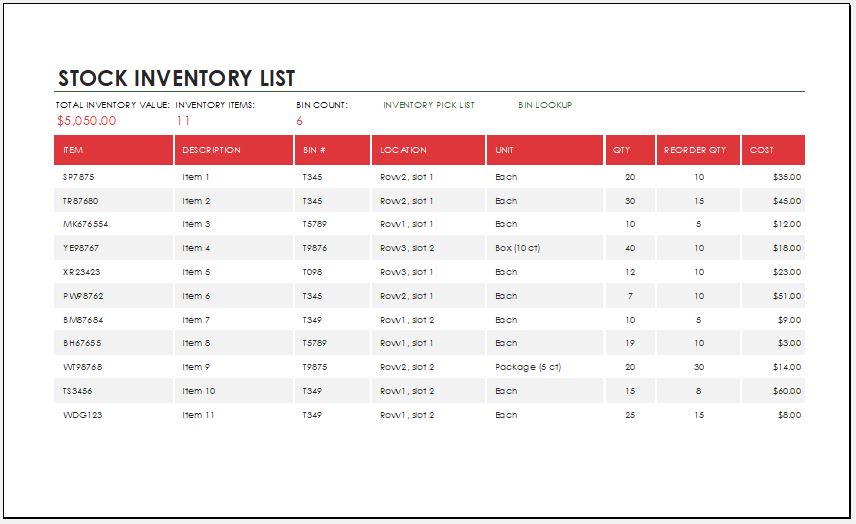Stock refers to the amount of goods a company keeps in storage. This includes both raw materials and finished products, provided they are ready for use in production or sale. Stock is considered an investment that helps a company meet customer demand and run its operations smoothly.
Since stock can yield future returns, deciding how much to hold and how to manage it is crucial. Effective stock management enables a company to achieve its objectives and operate efficiently.
What is stock inventory?
Stock inventory refers to the complete list and quantity of goods, materials, and products a business has on hand at a given time. This includes raw materials, work-in-progress items, and finished goods.
Or
This is a well-organized list of all the products a business currently has in stock. It includes important details about each item.
What does stock inventory do?
Maintaining an accurate stock inventory helps track inventory performance and turnover. It also supports better demand forecasting. This improves accuracy, stock control, and overall profitability. It provides the company with a clear view of what items are in stock and when they need to be restocked.
It also helps identify if there is too much of a particular item and how to reduce the excess. A well-managed inventory ensures that the correct quantity of items is available when customers need them, thereby helping to avoid customer loss.
Preview and Details of Template

File: Excel (.xlsx)
Size 31 KB
How do you stock inventory?
A proper procedure must be in place if you wish to pursue stock inventory. The following points can be considered when doing this:
Table format:
A stock inventory can be organized in a table that is easy for everyone to read and understand. The document should follow a clear and formal format. Start with a heading, such as “Stock Inventory.” Below the heading, include a table with all the necessary item details.
Name of product:
Have a column that includes the name of the item. You will state the name of every item in separate rows.
Description of product:
The next column can include a description of the items, allowing it to be known which product is being considered.
Quantity in stock:
It is essential to know the quantity of an item in stock. This helps the company decide when to restock the item. It also indicates if they have too much of a product, allowing them to sell the excess for a profit, if possible.
Costs:
The unit price of the product must be given. A column for this can be present. A separate column for inventory value can also be included.
Other details:
Additional columns can also be present for other details. There can be one for reorder level, for instance, so that it can be known when you need to reorder the product. The days for reorder can be specified, and the reorder quantity can also be specified.
Importance of stock inventory
A well-maintained stock inventory enables a company to track its stock levels effectively. It allows the company to track stock movement and determine when to reorder or adjust the quantity on hand. Accurate record-keeping is essential to ensure smooth and efficient operations.
When a company has complete and up-to-date information about its inventory, it can keep popular items in stock and reduce unnecessary ordering and storage costs. This helps increase both revenue and profit, giving the company a better chance to succeed in a competitive market.
Good inventory management also improves cash flow, sales, and overall profitability. In contrast, an outdated stock list can lead to stockouts or overstocking of unsold items. A detailed inventory list enables the company to make informed decisions about purchasing and production, resulting in improved performance and increased profits. Effective inventory management is crucial for meeting customer needs and ensuring customer satisfaction.
- Contractor Entry Log Template
- Holiday Party Planner Template
- Marketing Forms Used by Businesses
- HR-related Form Templates
- Personal Finance Tracker
- Daily Dog Care Checklist
- Holiday Shopping Budget Sheet
- Volunteer Work Hour Schedule Worksheet
- Vehicle Booking Sheet Template
- Payroll Audit Report Template
- Bonus Payment Record Sheet
- Overtime Payment Sheet Template
- Meeting Minute Examples
- Vacation Packing Checklist
- Carry-On Essentials List Template

